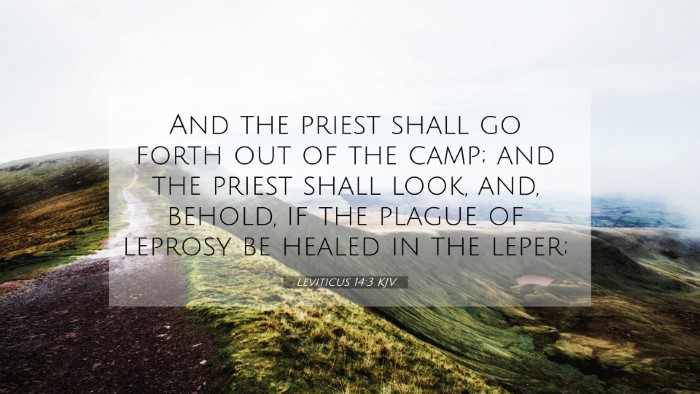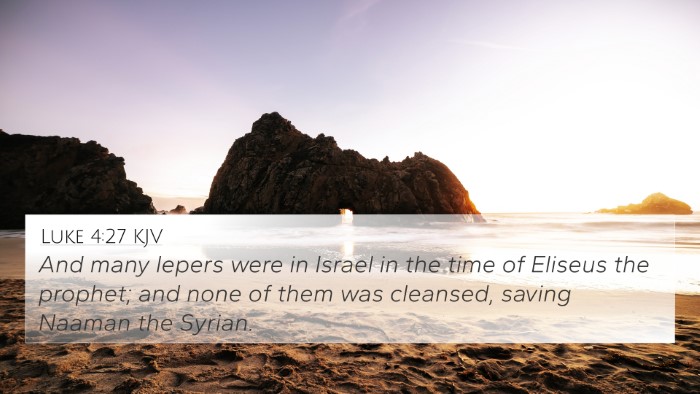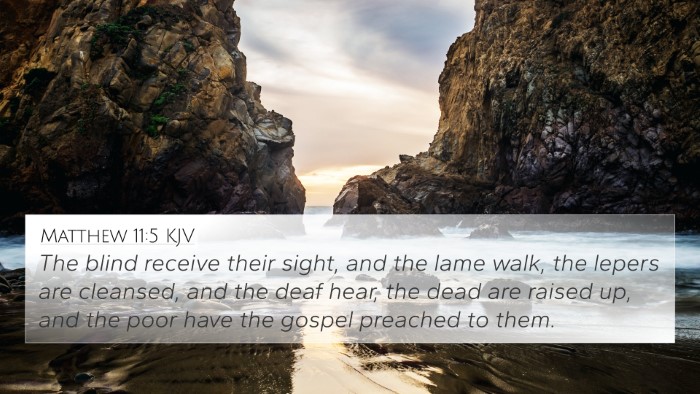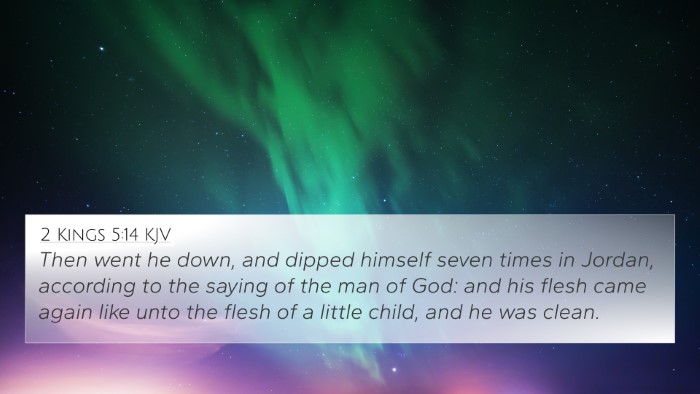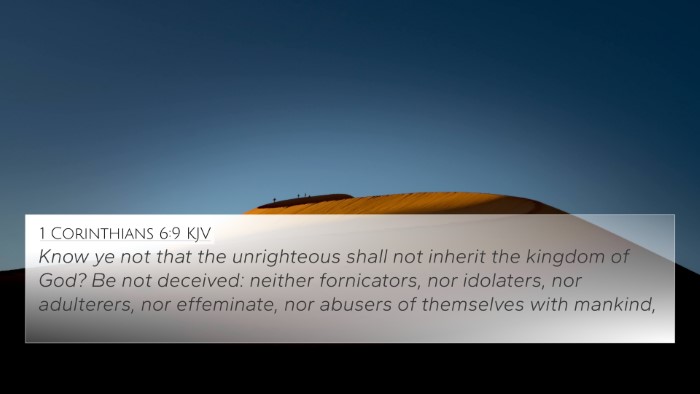Understanding Leviticus 14:3
The verse reads: "And the priest shall go forth out of the camp; and the priest shall look, and, behold, if the plague of leprosy be healed in the leper." In this passage, God outlines the procedure for the healing and purification of someone who has been afflicted by leprosy, representing a significant aspect of ceremonial law in ancient Israel.
Contextual Overview: Leviticus chapters 13 and 14 address the issues surrounding leprosy, a disease that rendered individuals ceremonially unclean and ostracized from the community. The priest's role in this process highlights the importance of spiritual and physical health within the Israelite community.
Key Insights from Commentaries
- Matthew Henry: Emphasizes the necessity of the priest’s examination as a divine protocol ensuring that the healing is recognized publicly. This reinforces the priest's function as a mediator between God and His people.
- Albert Barnes: Points out that the term "plague of leprosy" indicates not just actual leprosy, but also any severe skin disease. He underscores the priest's authority and the theological implications of purity and community health.
- Adam Clarke: Highlights that the healing signifies God’s mercy and restoration, not just healing from illness but also reintegration into the community of believers.
Thematic Connections
This verse relates to themes of purification, healing, and community holiness. It signifies not only the importance of physical health but also the spiritual implications of being healed and restored to the people of God.
Cross-References
The following Bible verses provide deeper insights and connections related to Leviticus 14:3:
- Leviticus 13:1-2: Describes the diagnosis of leprosy by the priest.
- Leviticus 14:2: Outlines the ceremonial cleansing process for a healed leper.
- Numbers 5:2: Addresses the broader issues of purity and the exclusion of the unclean from the camp.
- Matthew 8:2-4: Jesus healing a leper and commanding him to show himself to the priest.
- Luke 17:12-14: The account of Jesus cleansing ten lepers, emphasizing the priest's role.
- James 5:14: Discusses the calling of church elders for healing, aligned with the priest's duties.
- Isaiah 53:4-5: Portrays the suffering servant and His redemptive work related to healing.
Bible Cross-Referencing Tools
Utilizing Bible concordance and Bible cross-reference guides allows believers to explore connections between verses systematically. Here's how to engage in cross-referencing:
- Identify Themes: Look for recurring motifs like healing or purification.
- Use a Cross-Reference Bible Study: This tool lists related verses for deeper understanding.
- Engage with Commentaries: Commentaries provide insights that connect various Bible verses.
- Compile a Bible Chain: Create links between related verses on a specific theme or event.
Conclusion
Leviticus 14:3, while addressing the specific issue of leprosy, opens up broader discussions about community health, divine restoration, and the role of spiritual leaders. Through cross-referencing with other biblical texts, one can understand the deeper implications of this passage in the context of God’s redemptive plan.
In conclusion, when studying the Bible, it's essential to explore how different verses relate to and support one another, creating a rich tapestry of God’s message. The practice of cross-referencing Bible verses is vital for a comprehensive understanding of scriptural themes.


